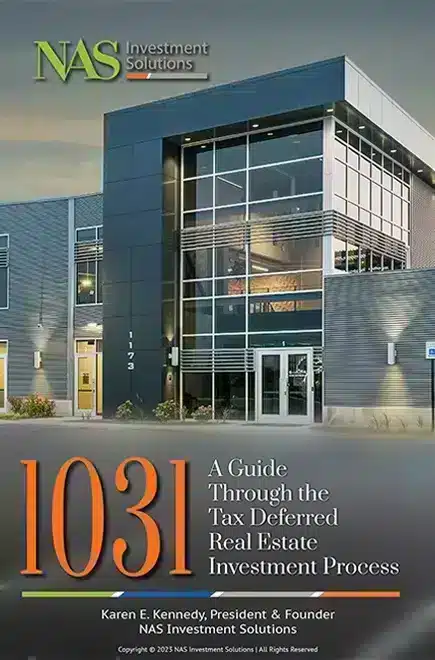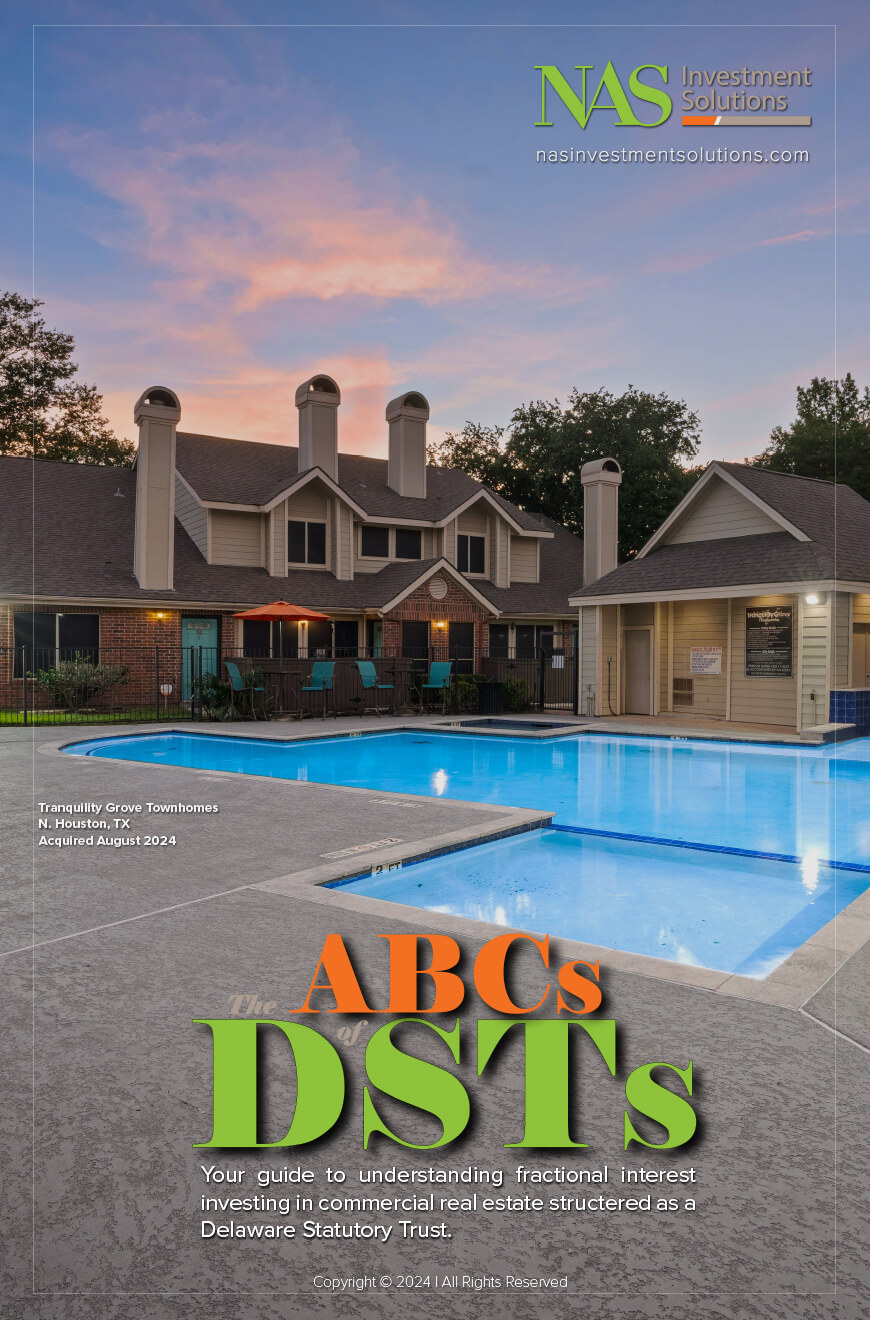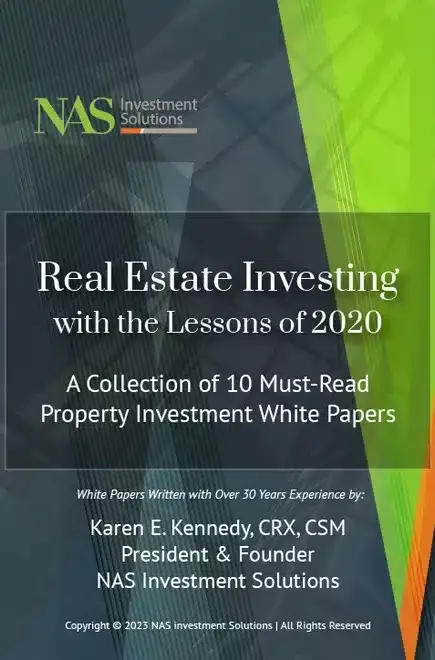Three Most Common Ways Investors Blow Their 1031 Exchange
A 1031 exchange, also known as a like-kind exchange, is a tax-deferred transaction allowed under Section 1031 of the Internal Revenue Code. 1031 exchanges provide a powerful tax strategy for investors to reinvest proceeds from the sale of real estate into new properties without immediate tax consequences. 1031 Exchanges are common transactions in the sale of real estate. The 2021 Ernst & Young Macroeconomic Impact Study found that overall, 1031 exchanges support 568,000 jobs and $27.5 billion of labor income in the United States during that year. Given that it is likely that total volume of exchange activity is underestimated, job growth and labor income could be as much as 710,000 and $34.4 billion, respectively.
At NAS Investment Solutions an estimated 65-70% of the property investments are a direct result of investors seeking a 1031 replacement property. The replacement property is commonly referred to as the “upleg” and the relinquished property is often referenced as the “downleg”.
Three Common Pitfalls in the 1031 Exchange Process
The IRS has mandated strict rules for investors who wish to participate in the 1031 Exchange process. These are not just “guidelines.” If the rules are not followed, an investor will “blow” their 1031 exchange and the consequences can be very damaging. There is no forgiveness. There are no exceptions. There are no do-overs. And depending on which state you live; the tax rate is 20% to over 33% of the capital gains from the sale of a property. I have been working with real estate investors for over 40 years and unfortunately it is not an uncommon occurrence for an investor to inadvertently disqualify themselves from the 1031 exchange process. In my experience there are three common pitfalls which investors unintentionally fall into to disqualify themselves from this valuable wealth-building, tax-deferment process.
- Taking Possession of Exchange Funds
- Missing the 45 Identification Deadline
- Failure to Identify a Back Up Replacement Property
Taking Possession of Exchange Funds – DO NOT Touch the Money

Money generated from the sale of the relinquished property must be held by a qualified intermediary until the replacement property is purchased. I cannot stress enough that the seller must not receive the money generated from the sale of their property. Even if by a mistake of escrow, it would blow up the opportunity for an exchange. A qualified intermediary is an independent third party who prepares the 1031 exchange documents required by the IRS, holds the sales proceeds, and transfers funds to pay for the replacement property. If the investor touches or in any way controls funds used for a 1031 exchange, the exchange will be disallowed by the IRS and tax on the capital gains must be paid.
Example: John Doe, an investor, sells a commercial property for $1 million. He intends to reinvest the proceeds into a like-kind property using a 1031 Exchange to defer capital gains taxes. However, due to a clerical error, the $1 million in proceeds is accidentally wired directly to his personal account instead of the qualified intermediary’s escrow account.
Unfortunately, John’s 1031 Exchange has just been invalidated. Be certain to read your escrow instructions carefully.
Missing The 45-Day Identification Deadline
Within forty-five calendar days of selling the original property, investors must identify the replacement property (or properties) they intend to acquire. The identification period starts on the day the relinquished property is transferred and ends at midnight on the 45th day…not business days – calendar days. The identification must be specific, including the property’s street address, legal description, or distinguishable name.

The replacement property must be of equal or greater value than the relinquished property to avoid “boot” which is taxable. Boot occurs when all the proceeds from the sale of the relinquished property (downleg) is not reinvested into the replacement property, (upleg) which then triggers a taxable event on the remaining amount.
Example: Let us consider the case of Emily, a seasoned real estate investor. Emily sells a multi-unit residential building for $2.5 million and plans to reinvest the proceeds into another property using a 1031 exchange. She is aware of the 45-day rule but assumes that finding a suitable replacement will be a breeze given her experience and market knowledge.
However, Emily becomes distracted with other projects and personal matters, delaying her search for a new investment. Before she knew it, the 45-day window had closed, and she had not identified any potential replacement properties.
Emily has just unintentionally blown her 1031 exchange opportunity. I have seen this happen on several occasions and it is so unfortunate. And there is nothing that can undo the result.
Failure to Identify a Backup Replacement Property
In addition to identifying a property within forty-five days from the date the relinquished property is sold, investors have 180 days to close on the purchase of the replacement property. However, several factors can affect the sale of commercial real estate including market volatility title problems, zoning issues and delays in financing. It is important to mitigate that risk by identifying a back up replacement property when you identify your primary property.
Example: Dr. Johnson, dentist in Los Angeles, decides to sell her rental property for $1 million. She plans to reinvest the proceeds into a new property using a 1031 exchange to defer capital gains taxes. She identifies a commercial building in San Francisco as her replacement property within the 45-day identification period. Unfortunately, due to unforeseen zoning issues, the deal falls through, and she has no backup property identified.

Without a backup, in this case, Dr. Johnson has just disqualified herself from a 1031 exchange.
Consequences of Blowing a 1031 Exchange
The IRS rules for a 1031 exchange are unforgiving and depending on an investor’s personal situation, the consequences of failing to comply with the rules of the process can be catastrophic. They include:
Immediate Tax Liability: If the IRS does not consider the transaction to be a valid 1031 Exchange. The investor is immediately liable for capital gains taxes on the sale of the property.
Interest and Penalties: If the IRS performs an audit and disallows the exchange, an investor may face penalties and interest on the underpayment of taxes, which could be substantial given the high value of the transaction.
Loss of Deferral Opportunity: An investor loses the opportunity to defer taxes through the 1031 Exchange, which could have been significant, especially if the investor planned to reinvest in a property of equal or greater value.
Potential Litigation: In some cases, such errors can lead to litigation, especially if there is a dispute over the responsibility for the mistake.
Financial Planning Disruption: The investor’s long-term financial planning could be disrupted due to the unexpected tax bill, affecting his investment strategies and liquidity.
Market Opportunity Loss: While dealing with the tax implications, an investor may also miss prime investment opportunities, further impacting on their portfolio’s growth.
Stress and Reputation: The stress of the situation and the potential damage to an investor’s professional reputation as a savvy investor can add to the consequential woes.
Preventative Measures
Procrastination can be costly, and in the realm of 1031 exchanges, time is indeed money. By understanding and respecting the rules, investors can continue to leverage this tax strategy to enhance their real estate portfolios effectively. An exchange investor’s planning should include the following.
- Beginning the search for replacement properties months before selling the relinquished property.
- Collaborating closely with a qualified intermediary (QI) who can help navigate the 1031 exchange process. A QI Intermediary is a trusted guide through the 1031 exchange journey. Their expertise, compliance management, and funds safeguarding are critical for a successful exchange.
- Keeping meticulous records and adhere strictly to all IRS rules and deadlines.
1031 Exchange Resources & Articles:
FREE 1031 Exchange Guide | A Guide Through the Tax Deferred Real Estate Investment Process
Web Page | 1031 Exchange Information
Article | 1031 Exchanges and Five Common Misconceptions
Article | Qualified Intermediaries and Their Role
PDF | Like-Kind Exchanges Under IRC Section 1031 | IRS.Gov
1031 Exchange Calculator | Estimate Your 45 & 180 Day Deadlines
Capital Gains Tax Rates by State









